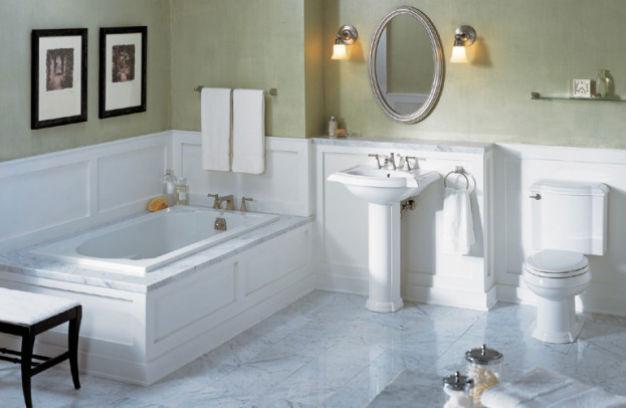
If You Want Something Done Right, DIY- Part 2: Bathroom Renovations
Welcome back home improvers. Now that you have given that fresh new coat of paint from our first DIY installment time to dry, let’s continue our campaign against repair bills. Next up, we are going to look at how to fix common issues in the most colorfully nicknamed room in the house: the bathroom.
The commode, that lavatory, the loo, the water closet: whatever your preferred vernacular for the all-important room, the last thing you want is for something to break in there. Bathroom repairs are not only inherently time sensitive, but plumbers are also costly. Not to mention the inconvenience of having to wait for a plumber, while his ‘trouser smile’ mocks you from above the beltline of his jeans. Don’t get me wrong, there are some times when a plumber is the only person for the job. But before you pick up the phone, here are a few ways that you might be more capable than you realize when it comes to restroom repair.
Squeaks
Few sounds can send a chill directly down your spine like the creaking of a hinge. Because of all the moisture in a bathroom, the fixtures and hinges inside are even more susceptible to become noisy. Luckily, this is an easy problem to correct. Applying liquid lubricant, such as WD40, to the offending joint should quickly silence any squeaking. Before applying WD40, be sure to lay down a cloth on the ground underneath where you are working to catch any excess. Also, remember that a little goes a long way. Start with just a few drops, then open and close the hinge a few times. If after a minute the noise persists, than apply a little more.

For habitually troublesome fixtures, try using a thicker product, like grease. It is especially important to apply sparingly when using more viscous materials, like grease.
Seal
Cracking, discolored caulking can make even the most well decorated bathroom appear uninviting. Even worse, worn out caulking may allow water to find its way into unwelcome places, leading to mold. But did you know how easy it is to replace the caulking in your tub? All it will take is a couple hours of your time, and under $10 worth of materials from The Home Depot.
To start, remove the old caulking using a scraper blade or putty knife. If the old stuff is giving you trouble, try using caulk softener. Apply it and let it sit for a couple minutes, then the caulking should scrape right off. Now you are ready to apply the new seal.
This part requires much less expertise than you might think. You will need a tube of caulking and a caulking gun, as well as something to smooth the paste as you lay it down. Start by cutting the tip of the tube at an angle so that the opening will nestle into the joints and corners. Then, load the tube into the caulking gun, which is very simple to use. As you pump the trigger to lay down the bead of caulking, use a tool like this Dap Cap to smooth it. While the Dap tool is perfectly designed for its purpose, running the valley of a folded piece of cardboard along the wet seal will also do the trick.
Use your scraper to remove any rouge material, and allow it to dry. This is a cheap and easy way to give your bathroom a major facelift.
Sink
Clogged drains are one of the most common issues that arise in a bathroom. No matter how careful you are to keep them clear, you will inevitably have to deal with a drain backing up. The key to avoiding disaster in this situation is to be prepared, which is as easy as having the right materials at the ready. The Home Depot sells a product called the Zip-it, and I always keep one below my sink. This $2 strip of toothy plastic has saved the day on more than one occasion in my house. Simply grip the tool by the tab on top and shove the bottom down the affected drain, then pull it out. It is not a bad idea to stash a pair of rubber glove with the Zip-it, as you are not going to want to touch what come out of the drain with your bare hands. Note that Zip-its are recommended for one time use.

Keeping a bottle of Drain-O nearby is also a good idea. However, be sure that it is kept out of reach of children as it is toxic if ingested. If the Zip-it is not doing the job, use the Drain-O as instructed on the bottle. You will be shocked at how many times this drain clearing dynamic duo can save you from a costly visit from the plumber.
It is important to remember that emergencies age going to happen, and they will sometimes require a Plumber. But with these tips, you will be ready to deal with some of the most common issues, and be confident that you are not just flushing your money down the toilet when you do call a professional.
